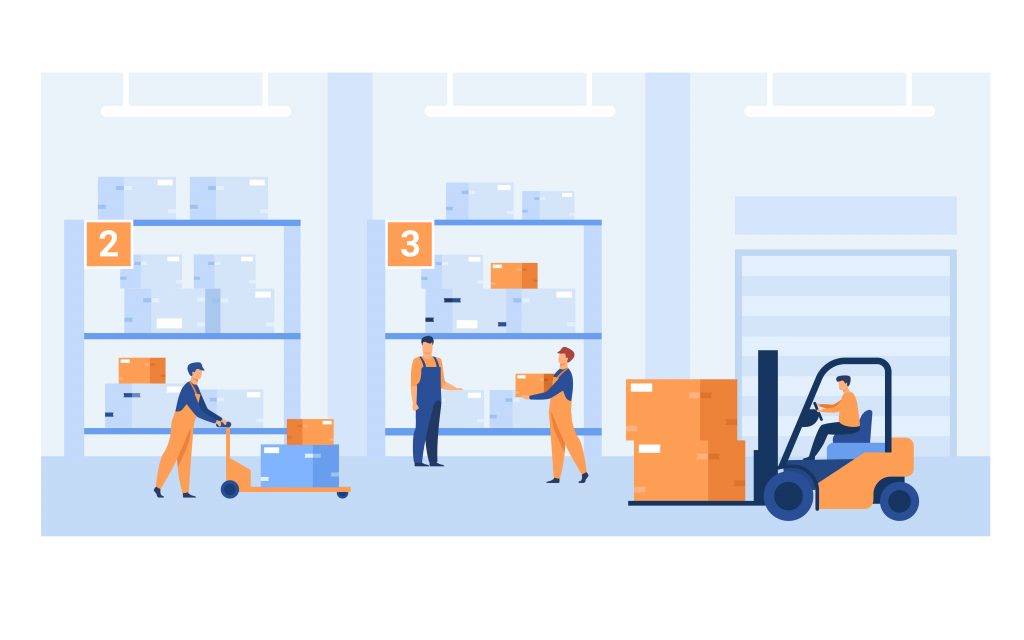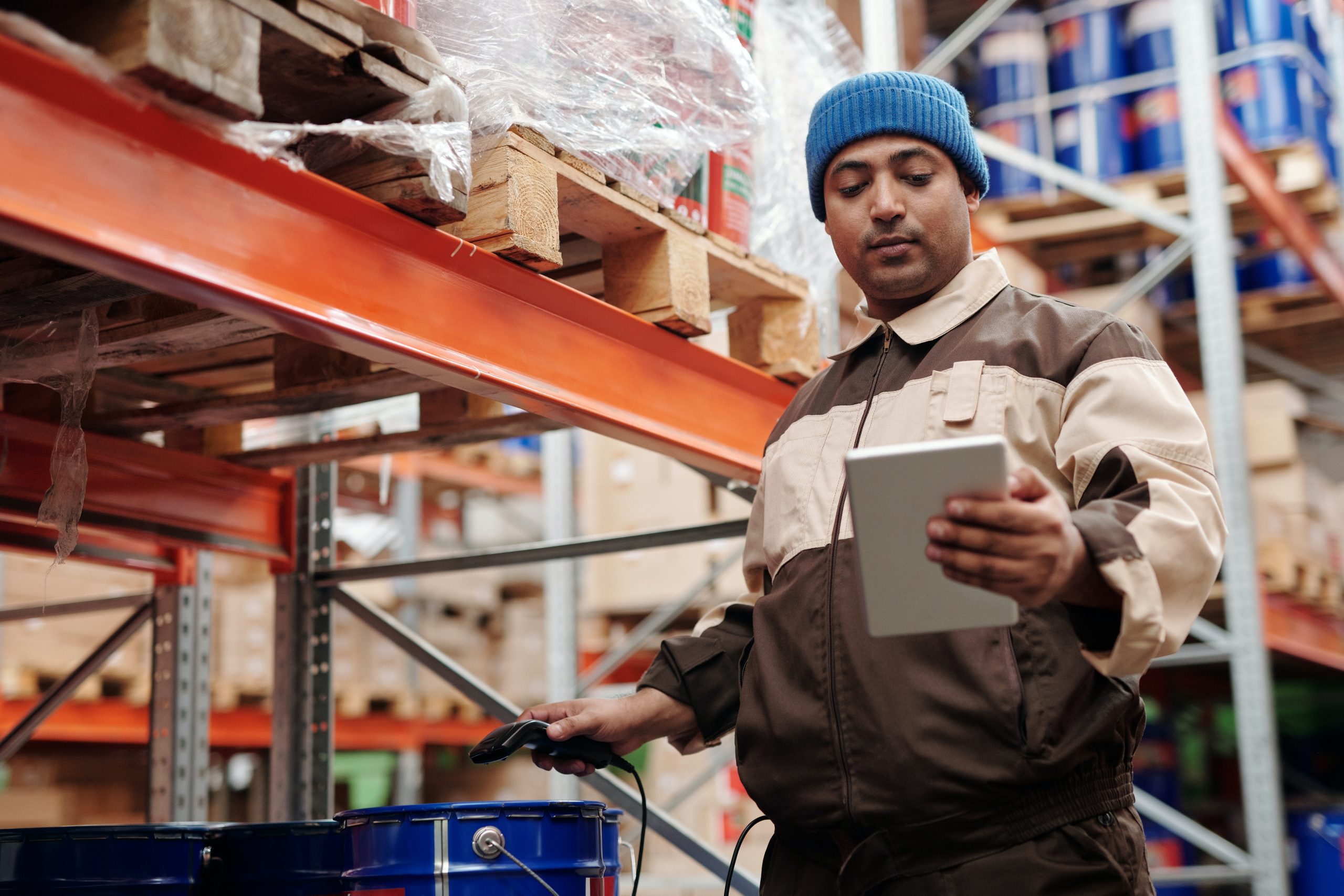E-commerce across the nation has aided enterprises in expanding their businesses and at the same time skyrocketing the nation’s economy. E-commerce warehouses have facilitated this level of growth in the industry, by opening up a completely new avenue of online, no contact, commercial transactions. To administer this level of expansion, manually operating personnel has been proven to be unsatisfactory. From delayed operations to extreme injuries and crimes taking place in these spaces on a daily basis; all major industries have found their solution in the implementation of IoT (internet of things) based automated machinery.


While its scope is still far from exhaustive, most industries have been amassing some basic benefits from it: security of premises and people, smart insights derived from the abundantly mundane data, and an overall efficiently working operational sector of their business.
Introduction
The use of IoT in e-commerce warehouses is largely due to the elaborate lifestyle modifications that people have been experiencing in the past few years, making online shopping a big hit and a requirement for all major retails to thrive in the global or even regional market. The increasing availability of amenities right at the click of our fingers and the comfort of receiving our packages right at our doorstep while paying online, has escalated the technological development throughout major industries.
How the transition to electronic commerce has affected businesses worldwide?
While a multitude of businesses has already made the transition from their conventional ways to more digitized ones, a large number is still left behind, still apprehensive to get on this bandwagon of evolving their scope of business. Due to the rapid expansion of businesses with larger funding capabilities towards a more scaled business, smaller and traditional businesses are facing the pressure of their restrictive measures. Irrespective of where a business was originally set up, e-commerce has eradicated the limitations of how far a person or their business can reach.
As long as a sustainable setup accommodates the requirements and demands of the people, not just in terms of quality but the customer’s experience throughout their order’s journey; a small business can be easily turned global. That is the influence that the digital market has created over this generation of ‘ease over toil’.
For any business to thrive, and for a longer period of time, it is a necessity to learn about what the customers truly want: the easy, the fast, and the transparent.
Adoption of IoT based systems by E-commerce Warehouses
E-commerce warehouses, being storehouses of not just products that are to be distributed locally or nationally, but even sometimes internationally; which is to say that these products can take a long period of time to reach different stations.
With the same day, two-day delivery trend; there is a greater need for these warehouses to be geographically dispersed but connected, in terms of their uniformity in operations and shared knowledge of inventory and assets. Warehouse security systems that not only support multiple site views and monitoring but also ensure speedy inbound and outbound movement while establishing a common platform for all inventory and equipment-related data; enhance the overall operational performance, generating a greater incoming of customers.
Inventory Management
Having been established with the initial purpose of providing a middle station for the safe storage of goods and their easier transportation to final destinations; warehouses have always required a higher number of recruits to manage the operations of these facilities.
With the expansion of business over the internet, this need for assistance has also been heightened; quenchable not just of employing a larger number of personnel but also automating routine operations for the timely and error-free functioning of the facility.
Warehouse management systems have been used to streamline asset monitoring by utilizing smart cameras, IoT sensors, and RFID tags that are connected to cloud-based platforms over secured networks.
Warehouse Management
Besides managing inventory, IoT-based warehouse systems allow owners and authorized personnel to monitor and maintain the optimum temperature and humidity settings, essential for perishable products while at the same time establishing a scalable infrastructure.
It allows users to build up their ecosystem as they like, at their preferred speed, matching it with the expansion of their enterprise. These AI-enabled structures to make it possible for enterprises to add more devices onto the system, turning their static businesses into something expandable.
Supply Chain management
With the rise in the number of orders coming in and going out and the explosive expansion witnessed by businesses with the employment of the internet of things as a means of automating the operations, there is a greater need for a smart system that takes on the role of inventory tracking. Keeping a check on an enterprise’s assets and inventory movement and simultaneously inputting the same into a computer or a system can be overly time-consuming.
The IoT based management systems, employed by tons of businesses worldwide, have been able to simplify this course of action, acting as a security guard with a complete and error-free collection of all the incoming and outgoing assets; keeping track of their location throughout the facility, and constantly updating the same without any manual interventions.
The employment of AI and IoT-based technologies has led to the onset of a fast-growing asset tracking market in the Asia-Pacific region, estimated to grow with a CAGR of 13.15%, over the forecast years of 2019 to 2028.
Physical security
E-commerce warehouses facilitate the safe storage of a wide variety of products as well as expensive equipment; requiring an AI-based mechanism to provide overall safety to the whole premise, all its inventory, as well as the personnel, employed. IoT-based management systems are equipped with IP cameras(internet protocol), smart sensors, secure gateway, and cloud storage with access to the complete ecosystem via unified dashboards available to every authorized logger.
Data security
Along with providing protection to the physical assets of a warehouse; it is absolutely necessary for business owners to protect all their inventory data that if made available to any intruder (physical or cyber) can cause a great deal of loss for the business. The IoT platform, that provides a collection of all the data pertaining to the business is protected with secure networks and gateways; while at the same time providing physical protection to server rooms with gate sensors, thermal sensors, door access sensors (ID verification) or IP cameras with motion detection abilities.
Concurrent monitoring
The AI and ML-based regulatory systems have proven to be an extremely extensive asset in terms of creating a constantly monitored premise, that keeps the employee performance in check while also maintaining a certain level of security across the site or multiple sites. Managers or authorized officers are able to have better control of the operational sphere even from a distance, ensuring timely processes and a high standard of services.
Conclusion
The ever-expanding scope of IoT and its applications across industries promises a vast gamut of advancement in operational process, increased security, and a workforce dedicated to making a more explorative business, delegating all mundane, routine tasks onto the IoT based machinery. These applications across warehouses have had a substantial effect on the overall performance of the facilities, smoothening out the complete journey a product takes before reaching the consumers.































